Videos
-
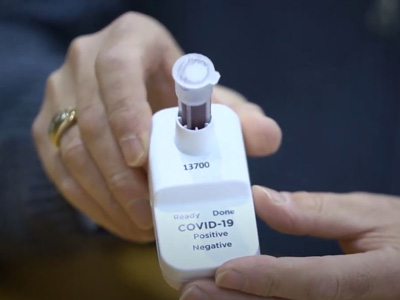 Feb 01 2021
Feb 01 2021UC San Diego BioSci Alumnus at Helm of Company Behind First At-Home COVID Test
Watch on YouTube Read article -
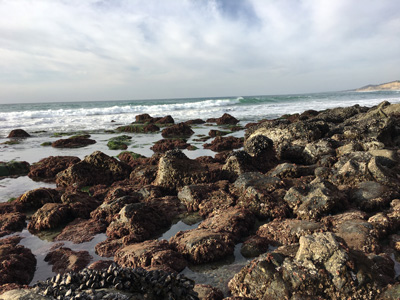 Jan 12 2021
Jan 12 2021Ocean Acidification is Transforming California Mussel Shells
New analyses reveal how over 60 years a critical marine species has responded to ocean acidification
Watch on YouTube Read article -
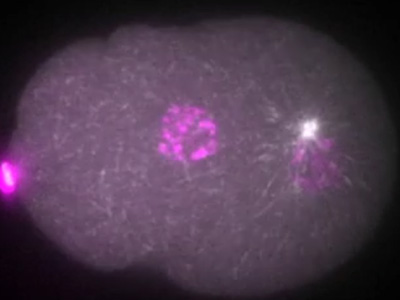 Jan 11 2021
Jan 11 2021Wait for Me: Cell Biologists Decipher Signal that Ensures No Chromosome is Left Behind
Researchers use novel probe to witness how a ‘matchmaker’ molecule puts the brake on cell division until components are ready to be split
Watch on YouTube Read article -
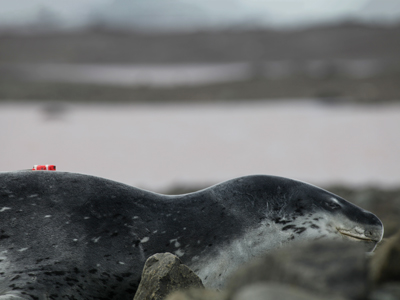 Aug 3 2020
Aug 3 2020From the Field: Innovative Animal-borne Video and Sampling Show Antarctic Leopard Seals as Adaptable Apex Predators
If you’ve ever seen a leopard seal in a film or documentary, chances are it was viciously tearing apart a penguin. Such images are captivating, but this portrayal is incomplete and, more importantly, inaccurate. Leopard seals are complex apex predators that shape their ecosystems in critical ways. Although poorly studied in the past, a recent collaborative study published by NOAA Fisheries and UC San Diego researchers in BMC Ecology has shed some light on the impact these large predators are having in the Antarctic.
Watch on YouTube Read article -
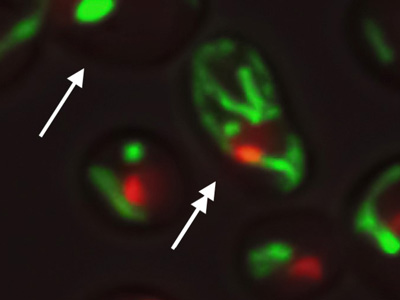 Jul 16 2020
Jul 16 2020Researchers Discover Two Paths of Aging and New Insights on Promoting Healthspan
Identifying a master aging circuit allows biologists to genetically engineer prolonged life
Molecular biologists and bioengineers at the University of California San Diego have unraveled key mechanisms behind the mysteries of aging. They isolated two distinct paths that cells travel during aging and engineered a new way to genetically program these processes to extend lifespan.
Watch on YouTube Read article -
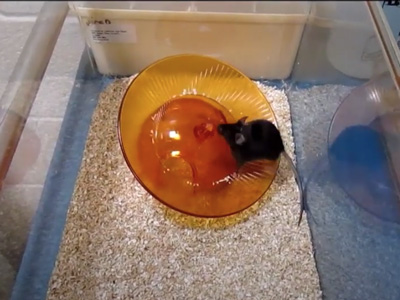
May 05 2020
Exercise Boosts Motor Skill Learning Via Changes in Brain’s Transmitters
Researchers find switch in chemical messaging is key prelude to motor skill acquisition
Watch Video 1 on YouTube Watch Video 2 on YouTube Read article -
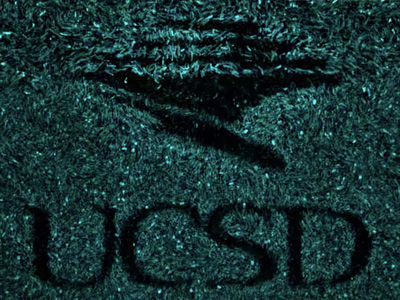
Apr 29 2020
They Remember: Communities of Microbes Found to Have Working Memory
Discovery draws surprising parallels between low-level organisms and sophisticated neurons; lays the groundwork for memory-capable biological systems
Watch on YouTube Read article -
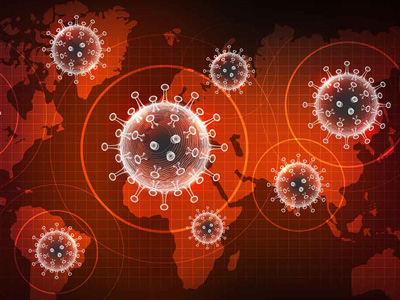
Apr 15 2020
A Deep Look into the Biology and Evolution of COVID-19
UCTV roundtable explores the biological roots and spread of the global SARS-CoV-2 virus
Of the hundreds of coronaviruses known to exist, many are relatively harmless. Coronaviruses infect your nose, sinuses and upper throat but often result in nothing more than a common cold.
Watch on YouTube Read article -
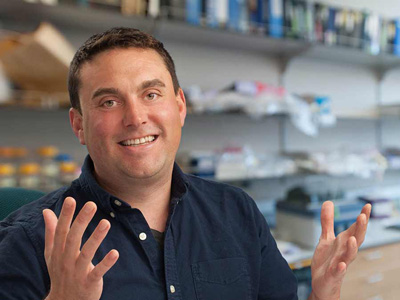
Apr 06 2020
Dissecting COVID-19: Biology Professor Opens Infectious Disease Course to Public Audiences
Podcasted class on UCTV and other outlets to analyze the biological roots and spread of coronavirus
Biological Sciences Assistant Professor Justin Meyer oversees a laboratory that specializes in the evolution of viruses and the natural processes that hasten their spread. He grows viruses in petri dishes and studies them as they evolve in real time, every so often watching them mutate onto new species.
Watch on UC-TV Read article -
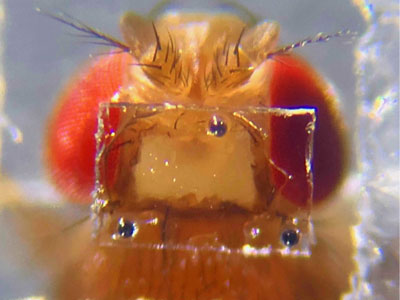
Feb 04 2020
Flyception 2.0: New Imaging Technology Tracks Complex Social Behavior
For the first time researchers record uninhibited fly brain activities during various stages of mating
What happens in the brain during courtship? During sex? Scientists at the University of California San Diego have a much clearer idea thanks to the evolution of an advanced imaging system designed to record ultra-precise brain activities in flies.
Watch on YouTube Read article -
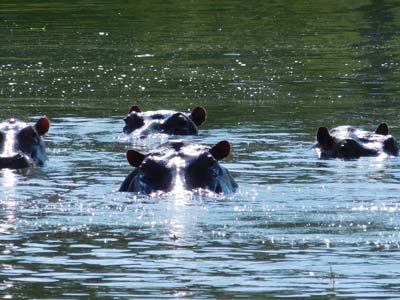
Jan 29 2020
Drug Lord’s Hippos Make Their Mark on Foreign Ecosystem
Study on the impacts of the world’s largest invasive animal in Colombia provides key insight into the future of a growing population
Four hours east of Medellín in northern Colombia’s Puerto Triunfo municipality, the sprawling hacienda constructed by infamous drug lord Pablo Escobar of “Narcos” fame has become a tourist attraction. When Escobar’s empire crashed, the exotic animals housed at his family’s zoo, including rhinos, giraffes and zebras, were safely relocated to new homes… except for the hippopotamuses.
Watch on YouTube Read article -
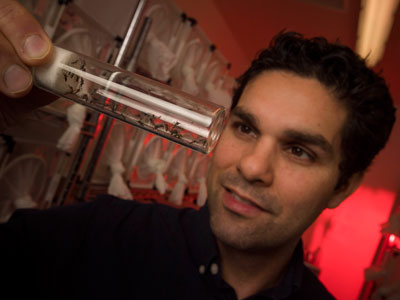
Jan 16 2020
Mosquitoes Engineered to Repel Dengue Virus
Researchers develop the first mosquitoes synthetically designed to neutralize many types of the widespread infectious disease
An international team of scientists has synthetically engineered mosquitoes that halt the transmission of the dengue virus.
Watch on YouTube Read article -
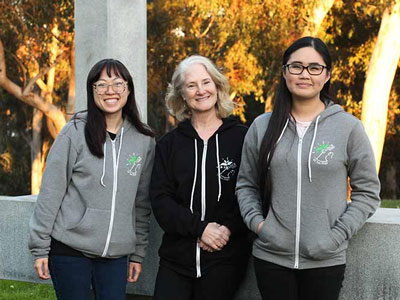
Nov 01 2019
Waking Up to Why Sleep Health Matters
UC San Diego students, scientists drive new initiative aimed at helping the public ‘see the light’ on circadian rhythms and sleep health
At the start of the day, we all do it. We reflexively reach for our phones. As the day winds down, many of us can’t help but do the same. We lie in bed as the luminous glow of our phones—along with TVs and tablets, in many cases—shines into our eyes.
Watch on YouTube Read article -
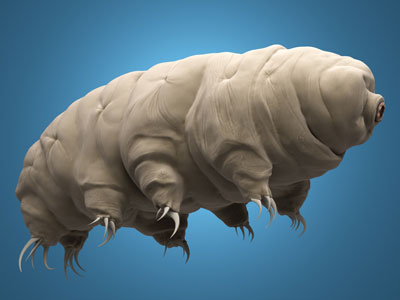
Oct 01 2019
Cracking How ‘Water Bears’ Survive the Extremes
Researchers discover that a protein in tiny tardigrades binds and forms a protective cloud against extreme survival threats such as radiation damage
Scientists at the University of California San Diego have gained a new understanding of how tardigrades are protected in extreme conditions. Their findings are published in the journal eLife on Oct. 1, 2019.
Watch on YouTube Read article -
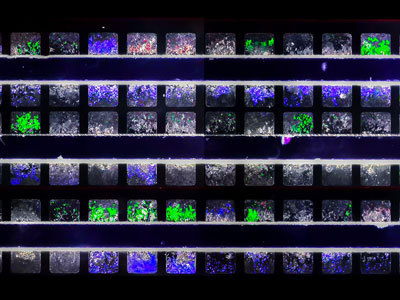
Sept 05 2019
Synthetic Biologists Extend Functional Life of Cancer-Fighting Circuitry in Microbes
Bioengineers and biologists at the University of California San Diego have developed a method to significantly extend the life of gene circuits used to instruct microbes to do things such as produce and deliver drugs, break down chemicals and serve as environmental sensors.
Watch on YouTube Read article -
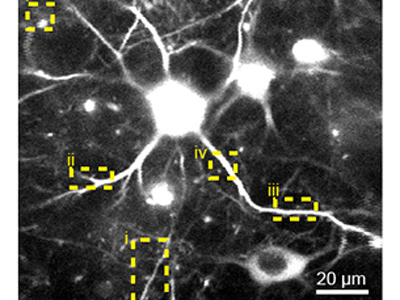
Jun 19 2019
Borrowing from Astronomy to Rob the Twinkle from Brain Imagery
Neurophysicists make new recording of nerve signals by adapting tools of astronomers
Recently, UC San Diego Professor David Kleinfeld, along with postdoctoral fellow Rui Liu, realized how to adopt a process called “adaptive optics” (AO) to correct for changes in the density and moisture of air in the atmosphere to correct microscopic images for the scattering of light that occurs in brain tissue.
Watch on YouTube Read article -
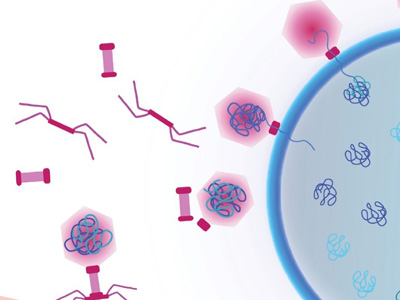
Jun 14 2019
Viruses Found to Use Intricate ‘Treadmill’ to Move Cargo across Bacterial Cells
State-of-the-art technologies reveal bacterial cells organized like human cells, offering insights for new phage therapies on untreatable infections
Now, using advanced technologies to explore the inner workings of bacteria in unprecedented detail, biologists at the University of California San Diego have discovered that in fact bacteria have more in common with sophisticated human cells than previously known.
Watch on YouTube Read article -
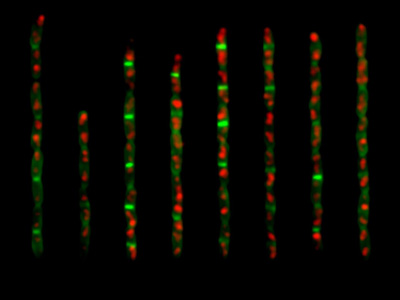
May 16 2019
Researchers Unravel Mechanisms that Control Cell Size
Team of biologists, engineers and physicists uncover origins of precise cellular reproduction
Working with bacteria, a multidisciplinary team at the University of California San Diego has provided new insight into a longstanding question in science: What are the underlying mechanisms that control the size of cells?
Watch on YouTube Read article -
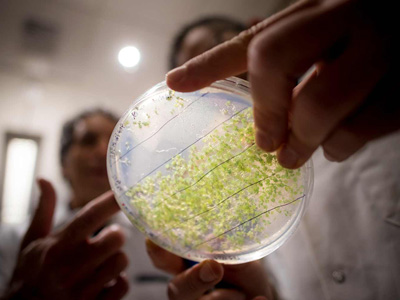
May 10 2019
Shatterproof: The Seeds of a Blockbuster Discovery
Basic science yields discoveries that are crucial to our lives and the world we inhabit, generating advances that enrich our knowledge about life, health and the natural wonders that shape our existence. But in the modern era of instant gratification and razor-thin attention spans, such contributions are too often supplanted by glitzy tweets and bite-sized news nuggets.
Watch on YouTube Read article -
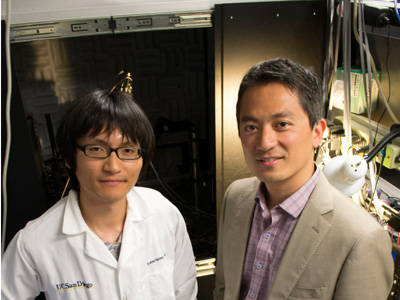
May 09 2019
Scientists Locate Brain Area Where Value Decisions Are Made
Data from mouse neurons point to unexpected brain region, carrying implications for health and disease
Neurobiologists at the University of California San Diego have pinpointed the brain area responsible for value decisions that are made based on past experiences.
Watch Video 1 on YouTube Watch Video 2 on YouTube Read article -
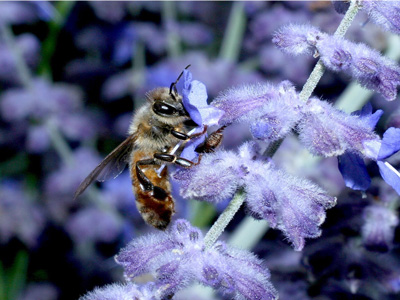
Apr 11 2019
Pesticide Cocktail Can Harm Honey Bees
Combined with common fungicide, ‘bee safe’ Sivanto leads to abnormal behavior and lower survival
A recently approved pesticide growing in popularity around the world was developed as a “bee safe” product, designed to kill a broad spectrum of insect pests but not harm pollinators.
Watch on YouTube Read article -
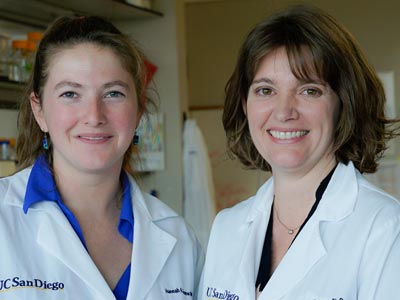
Jan 23 2019
UC San Diego Researchers First to Use CRISPR/Cas9 to Control Genetic Inheritance in Mice
Technology offers powerful new genetic tools for human disease research in rodents
Biologists at the University of California San Diego have developed the world’s first CRISPR/Cas9-based approach to control genetic inheritance in a mammal.
Watch on YouTube Read article -
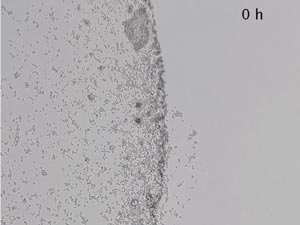
Dec 13 2018
Coming to Light: Researchers Document Surprise Mobility in Wild Bacteria
University of California San Diego Biologist Susan Golden and her colleagues have used cyanobacteria as a key model for circadian rhythm studies, analyzing the organism’s 24-hour regular cycles that operate with the precision of a mechanical clock.
Watch Video 1 on YouTube Watch Video 2 on YouTube Read article
-
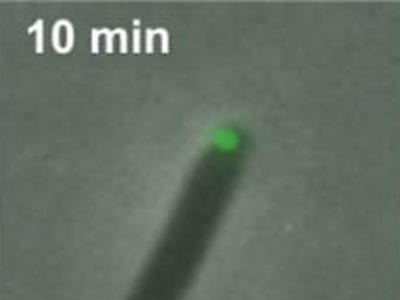
Sep 27 2018
Taking out the (Life-threatening) Garbage: Bacteria Eject Trash to Survive
‘Minicell’ pods, used in drug delivery, discard damaged proteins to prolong life
Scientists have known for decades that certain bacteria produce small spherical versions of themselves. Although they lack basic materials to reproduce or function like normal cells, recent interest in such “minicells” has spiked due to their proficiency as nano-sized delivery tools for drugs and vaccines to targeted cells and tissues.
-
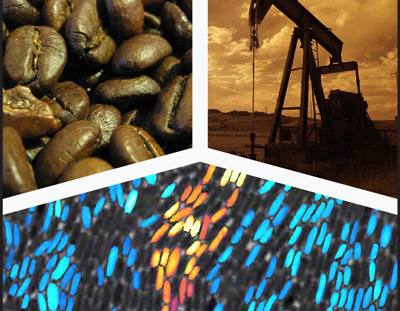
July 25 2018
Bacterial Communities Use Sophisticated Strategy to Communicate over Long Distances
Clusters of bacteria employ the same ‘percolation’ method we use to brew coffee
A theory known as “percolation” is now helping microbiologists at the University of California San Diego explain how communities of bacteria can effectively relay signals across long distances.
-
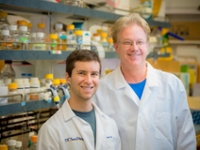
March 05 2018
Researchers Film Bacteria Using "Hand-to-Hand" Combat to Steal Antibiotic Resistance Genes
Researchers at the University of California San Diego Center for Microbiome Innovation have identified the mechanism by which a clinically relevant bacterium may gain antibiotic resistance, and have come up with a model for predicting the conditions under which it spreads. The findings, which establish a framework for understanding, quantifying and hopefully combating the emergence of superbugs, were published in a recent paper in eLife.
-
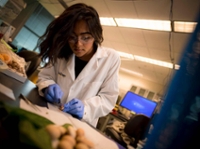
Feb 05 2018
UC San Diego Undergraduate Synthesizes Visual Arts, Community Engagement and Scientific Research for Health Activism
Multidisciplinary issues need multidisciplinary solutions. That’s biology major and visual arts minor Anika Ullah’s mantra. Ullah believes that when put together, visual media, science and community engagement can serve as powerful tools for gaining insight into current health-related issues, shaping scientific study design and increasing public agency—and she’s dedicated her undergraduate career to three local, binational and global projects that accomplish that aim.
-
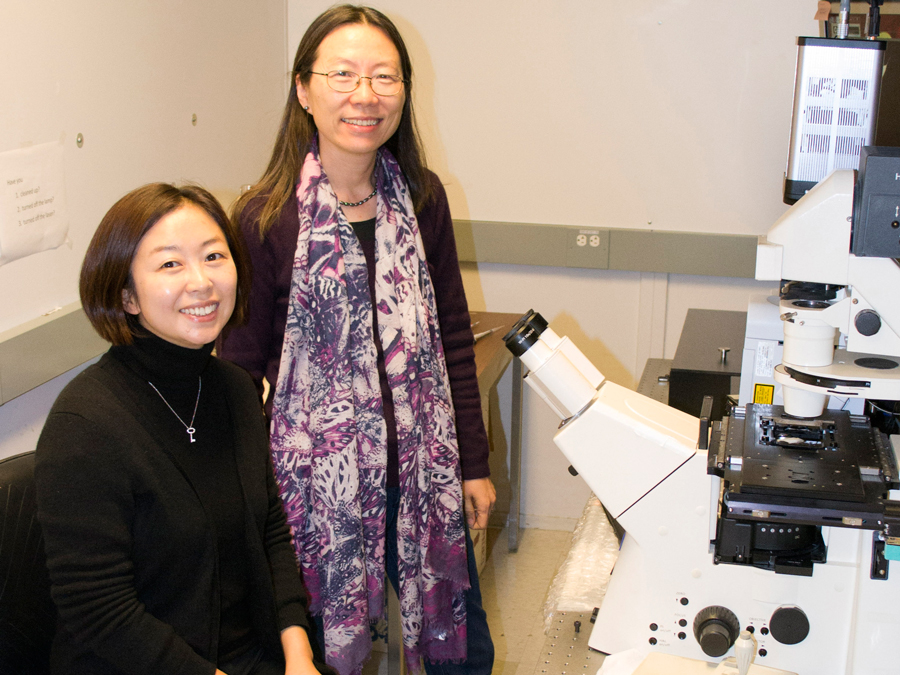
Jan 25 2018
Discovery Offers New Genetic Pathway for Injured Nerve Regeneration
Finding could pave road to regrowth after traumatic injuries, stroke and spinal damage
On the hunt for genes involved in regenerating critical nerve fibers called axons, biologists at the University of California San Diego came away with a surprise: The discovery of a new genetic pathway that carries hope for victims of traumatic injuries—from stroke to spinal cord damage.
UC San Diego Biological Sciences Assistant Project Scientist Kyung Won Kim, Professor Yishi Jin and their colleagues conducted a large-scale genetic screening in the roundworm C. elegans seeking ultimately to understand genetic influences that might limit nerve regrowth in humans. Unexpectedly, the researchers found the PIWI-interacting small RNA (piRNA) pathway—long believed to be restricted to function in the germline—plays an active role in neuron damage regeneration.
-
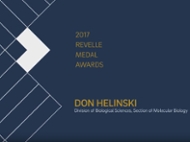
Nov 28 2017
Don Helinski Honored with Revelle Medal
Biologist receives Chancellor’s highest honor for a half-century of contributions
Don Helinski, professor emeritus in the Division of Biological Sciences’ Section of Molecular Biology, has been awarded a 2017 Revelle Medal, the highest honor given by the Chancellor to a current or former UC San Diego faculty member. Helinski was honored with the medal on Nov. 17, 2017 during the university’s Founders Day celebration.
-
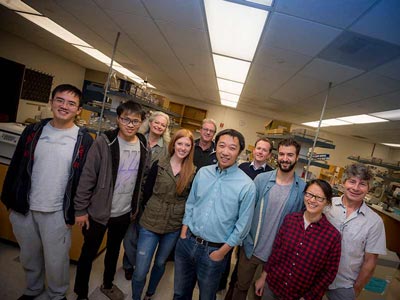
Nov 2 2017
Scientists Decipher Mechanisms Underlying the Biology of Aging
Multi-pronged approach reveals a delicate balance required for longevity
Understanding the factors that control aging has been one of humanity’s endless pursuits, from the mystical fountain of youth to practical healthful regimens to prolong life expectancy.
A team of scientists at the University of California San Diego has now helped decipher the dynamics that control how our cells age, and with it implications for extending human longevity. As described in a study published in Proceedings of the National Academy of Sciences, a group led by biologist Nan Hao employed a combination of technologies in engineering, computer science and biology to analyze molecular processes that influence aging.
Watch Video 1 on YouTube Watch Video 2 on YouTube Read article
-
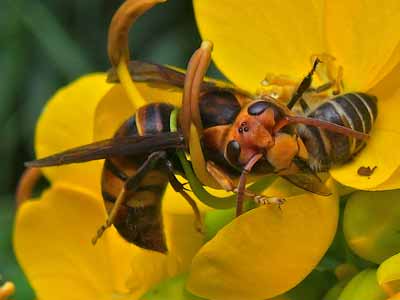
Oct 13 2017
Luring Hornets: Scientists Unlock Sex Pheromone of Notorious Honey Bee Predator
Traps baited with synthetic pheromone could become solution to invasive Asian hornet
Over the past decade, Asian hornets, predatory insects with a widespread and expanding population, have invaded parts of Europe and Korea. Vespa velutina has a growing reputation as a species that proliferates rapidly, preys on honey bees and poses risks to humans.
Now a biologist at the University of California San Diego and his colleagues in Asia have developed a solution for controlling Asian hornets derived from the insect’s natural chemical mating instincts.
Watch Video 1 on YouTube Watch Video 2 on YouTube Watch Video 3 on YouTube
-
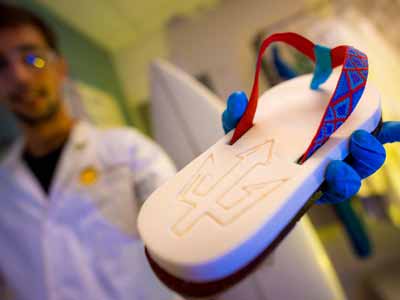
Oct 5 2017
A Flip Flop Revolution
From algae surfboards to sustainable shoes, a campus innovation that could change the world
UC San Diego students and researchers have produced the world’s first algae-based, renewable flip flops.
The first prototypes of their new invention, developed over the summer in a York Hall chemistry laboratory, consist of a flexible, spongy slipper adorned with a Triton logo and a simple strap—fairly basic, as flip flops go.
But when they go into full production later this academic year at what researchers hope will be a projected cost of $3 a pair, the impact of this campus innovation could be revolutionary, changing the world for the better environmentally.
-
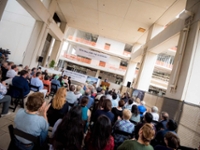
Sept 13, 2017
Tata Institute for Genetics and Society Advances with Building Naming, Inaugural Chair Holders
C San Diego celebrated the dedication of a new building for the divisions of Biological and Physical Sciences on Sept. 12 with a special announcement. The cutting-edge science building will bear the name Tata Hall for the Sciences, or Tata Hall, in recognition of a $70 million gift from the Tata Trusts, which was committed last year to create the binational Tata Institute for Genetics and Society.
-
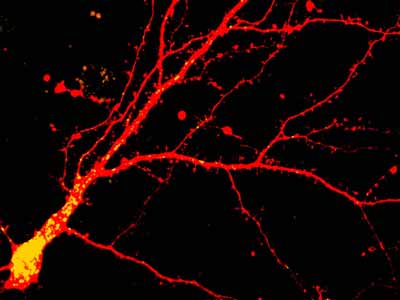
Aug 7 2017
A New View for Protein Turnover in the Brain
Researchers probe key processes potentially underlying a variety of neurological diseases
Scientists at the University of California San Diego, led by graduate student Marisa Goo under the guidance of Professor Gentry Patrick, have provided the first evidence that lysosomes can travel to distant parts of neurons to branch-like areas known as dendrites.
-
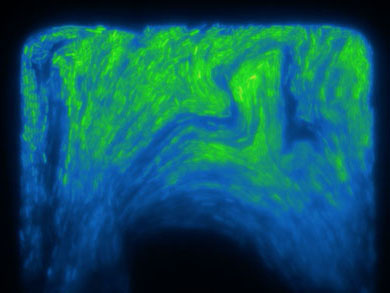
Jul 13 2017
Scientists Invent New Tool for the Synthetic Biologist’s Toolbox
Researchers at the University of California San Diego have invented a new method for controlling gene expression across bacterial colonies. The method involves engineering dynamic DNA copy number changes in a synchronized fashion.
-
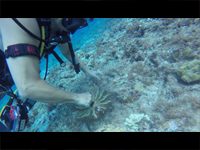
May 22 2017
Study Finds Bacteria Living in Marine Sponge Produce Toxic Flame Retardant-Like Compounds
A Scripps Institution of Oceanography at the University of California San Diego-led research team, along with scientists in the UC San Diego Division of Biological Sciences, discovered for the first time that a common marine sponge hosts bacteria that specialize in the production of toxic compounds nearly identical to man-made fire retardants.
-
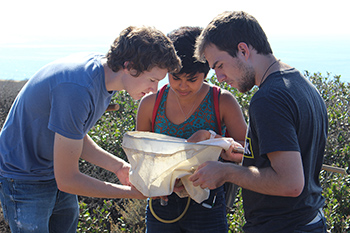
May 4 2017
Q&A with Heather Henter, Academic Coordinator, UC San Diego Natural Reserve System
The UC Natural Reserve System (NRS) is a network of 39 (soon to be 40) largely undisturbed properties across the state, set aside to fulfill the mission of the UC: education, research and public service. We are different from state/national parks or other wild lands because we are part of a university, thus research and education are a focus. These sites are living laboratories for researchers and classrooms without walls for students. And because we are a system, we can address important topics like climate change ecosystem-wide. The network includes most habitats in the state, from coast to desert to alpine.
-
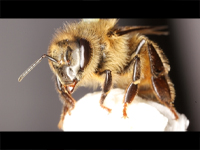
Apr 26 2017
Common Pesticide Damages Honey Bee’s Ability to Fly, Research Finds
Study provides the first evidence that a broadly used pesticide alone can harm bee flight
Biologists at the University of California San Diego have demonstrated for the first time that a widely used pesticide can significantly impair the ability of otherwise healthy honey bees to fly, raising concerns about how pesticides affect their capacity to pollinate and the long-term effects on the health of honey bee colonies.
-
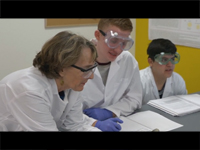
Apr 7 2017
Stephanie Mel Honored for Exceptional Undergraduate Teaching
Associate teaching professor among those recognized at Chancellor’s Associates Faculty Excellence Awards ceremony
Stephanie Mel, associate teaching professor of molecular biology, was recognized by the UC San Diego Chancellor’s Associates for excellence in undergraduate teaching during the 2017 Faculty Excellence Awards.
-
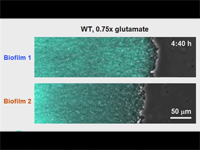
Apr 6 2017
UC San Diego Biologists Discover Timesharing Strategy in Bacteria
Communities found to coordinate feeding to streamline efficiency
Timesharing, researchers have found, isn’t only for vacation properties. While the idea of splitting getaway condos in exotic destinations among various owners has been popular in real estate for decades, biologists at the University of California San Diego have discovered that communities of bacteria have been employing a similar strategy for millions of years.
Watch Video 1 on YouTube Watch Video 2 on YouTube Watch Video 3 on YouTube
-
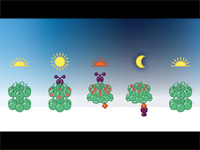
Mar 21 2017
Ancient Biological Clockwork Revealed Using ‘Secret Sauce’
A new paper released in the prestigious journal Science explains how the labs of LiWang and his colleagues captured assemblies of the proteins that direct cyanobacterial circadian rhythms, or biological clocks, in large complexes and made spectroscopic “snapshots” of their different formations using X-ray crystallography and nuclear magnetic resonance (NMR) spectroscopy.
Watch Video 1 on YouTube Watch Video 2 on YouTube Read article
-
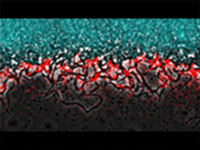
Mar 2 2017
Bacteria Recruit Other Species with Long Range Electrical Signals
Biologists at UC San Diego who recently found that bacteria resolve social conflicts within their communities and communicate with one another like neurons in the brain have discovered another human-like trait in these apparently not-so-simple, single-celled creatures.
-
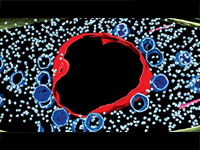
Jan 18 2017
Biologists Discover How Viruses Hijack Cell’s Machinery
Biologists at UC San Diego have documented for the first time how very large viruses reprogram the cellular machinery of bacteria during infection to more closely resemble an animal or human cell—a process that allows these alien invaders to trick cells into producing hundreds of new viruses, which eventually explode from and kill the cells they infect.
-
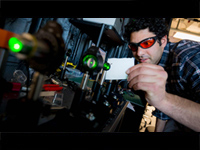
Nov 10 2016
Hacking a Revolution in Biology
Graduate students in new quantitative biology doctoral program learn to modify microscopes and other instruments to probe frontiers of their emerging discipline
Graduate studies within any single scientific discipline are challenging endeavors on their own. But imagine combining graduate school-level training in physics and mathematics with advanced research in engineering and biology.
-
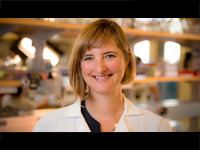
Oct 14 2016
Rachel Dutton Awarded Packard Fellowship
A molecular biology professor at the University of California San Diego who developed an innovative way to understand the development and evolution of microbial communities using cheese is one of 18 early-career scientists and engineers nationwide who have won prestigious 2016 Packard Fellowships for Science and Engineering.
-
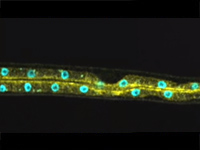
Aug 22 2016
Single-Celled Fungi Multiply, Alien-Like, by Fusing Cells in Host
Microsporidia cause diarrhea, an illness called microsporidiosis and even death in immune-compromised individuals.
In spite of those widespread medical problems, scientists were uncertain about how these single-celled fungi reproduced in human or animal cells.
But in a study that employed transparent roundworms, biologists at the University of California San Diego succeeded in directly observing how these microorganisms replicate and spread. And what they saw surprised them.
-
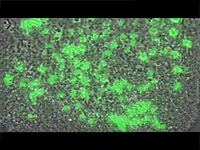
Jul 20 2016
Synthetic Biology Used to Limit Bacterial Growth and Coordinate Drug Release
Researchers at the University of California San Diego and the Massachusetts Institute of Technology (MIT) have come up with a strategy for using synthetic biology in therapeutics. The approach enables continual production and release of drugs at disease sites in mice while simultaneously limiting the size, over time, of the populations of bacteria engineered to produce the drugs. The findings are published in the July 20 online issue of Nature.
-
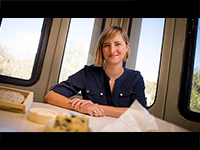
Apr 21 2016
Say ‘Cheese’
In an innovative effort to understand microbial communities, a UC San Diego biology professor has turned cheese into her ‘lab rat’
While many microbiologists build entire research careers around studies of a single microorganism, Rachel Dutton has taken her career in the other direction—examining collections of microbes, but with an unusual twist. She studies what grows on cheese.
-
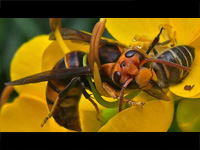
Mar 29 2016
Biologists Discover Sophisticated “Alarm” Signals in Honey Bees
‘Stop signals’ found to encode predator danger and attack context
Bees can use sophisticated signals to warn their nestmates about the level of danger from predators attacking foragers or the nest, according to a new study.
-
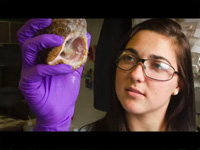
Oct 29 2015
Mining Microbes: Division Plays Key Role in Campus Initiative
You are only 10 percent human. Ninety percent of the cells that make up our bodies are actually bacteria, viruses, fungi and other microbes. And researchers are now finding that these unique microbial communities — called microbiomes — can greatly influence human and environmental health. The human gut microbiome alone has now been linked to allergies, inflammatory bowel disease, obesity and many other conditions.
-
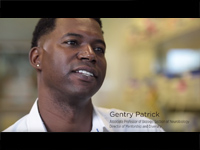
Oct 15 2015
A Mentor for Success
Biology professor strives to serve as example for students from diverse backgrounds
Like many faculty members at UC San Diego, Gentry Patrick arrived on campus with sterling academic credentials: An undergraduate degree from the University of California, Berkeley, a Ph.D. from Harvard University and a postdoctoral fellowship from Caltech.
-
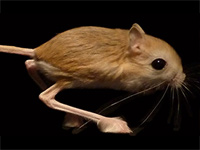
Oct 8 2015
Evolution of Kangaroo-Like Jerboas Sheds Light on Limb Development
With their tiny forelimbs and long hindlimbs and feet, jerboas are oddly proportioned creatures that look something like a pint-size cross between a kangaroo and the common mouse.
How these 33 species of desert-dwelling rodents from Northern Africa and Asia evolved their remarkable limbs over the past 50 million years from a five-toed, quadrupedal ancestor shared with the modern mouse to the three-toed bipedal jerboa is detailed in a paper published in this week’s issue of the journal Current Biology.
-
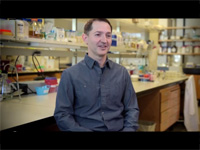
Jul 22 2015
Resolving Social Conflict Is Key to Survival of Bacterial Communities
Far from being selfish organisms whose sole purpose is to maximize their own reproduction, bacteria in large communities work for the greater good by resolving a social conflict among individuals to enhance the survival of their entire community.
It turns out that, much like human societies, bacterial communities benefit when they can balance opposing needs within the group.
-
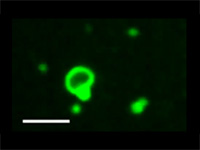
Jun 22 2015
Scientists Create Synthetic Membranes That Grow Like Living Cells
Chemists and biologists at UC San Diego have succeeded in designing and synthesizing an artificial cell membrane capable of sustaining continual growth, just like a living cell.
-
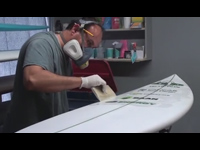
Apr 24 2015
Surfing into a Greener Future
World’s first algae-based, sustainable surfboard produced by UC San Diego biology and chemistry students
UC San Diego’s efforts to produce innovative and sustainable solutions to the world’s environmental problems have resulted in a partnership with the region’s surfing industry to create the world’s first algae-based, sustainable surfboard.
-
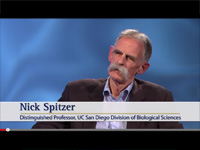
Mar 4 2015
The Future of Neurosciences at UC San Diego
Division of Biological Sciences Professors Darwin Berg and Nick Spitzer, Director of the Kavli Institute for Brain and Mind, discuss the development of neuroscience research at UC San Diego, President Obama's BRAIN Initiative and the emerging field of “neurotechnology.”
-
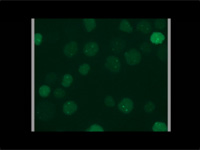
Aug 15 2014
Quantitative Biology approach reveals importance of physical constraints on critical DNA interaction
Joseph Lucas, a graduate student working with Cornelis Murre, a professor of biology at UC San Diego, tagged individual gene segments in live cells to track their movement in three dimensions.
-
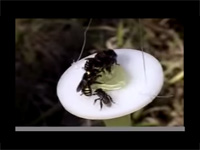
Jul 07 2014
Why ‘Whispers’ Among Bees Sometimes Evolve Into ‘Shouts’
Let’s say you’re a bee and you’ve spotted a new and particularly lucrative source of nectar and pollen. What’s the best way to communicate the location of this prize cache of food to the rest of your nestmates without revealing it to competitors, or “eavesdropping” spies, outside of the colony?
-
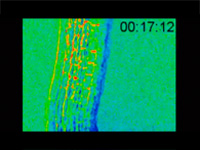
Apr 15 2014
Biologists Develop Nanosensors to Visualize Movements and Distribution of Plant Stress Hormone
Biologists at UC San Diego have succeeded in visualizing the movement within plants of a key hormone responsible for growth and resistance to drought.
-
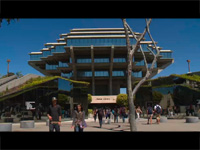
Oct 10 2013
New Dean Seeks to Improve Undergraduate Experience
Biology majors and students taking undergraduate biology courses will see some new changes to improve the undergraduate experience this year, according to Dean Bill McGinnis.
-
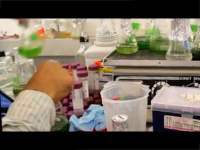
Dec 10 2012
Biologists Engineer Algae to Make Complex Anti-Cancer 'Designer' Drug
Biologists at UC San Diego have succeeded in genetically engineering algae to produce a complex and expensive human therapeutic drug used to treat cancer.
-
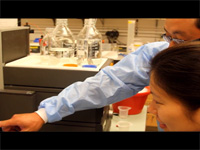
Sep 24 2012
Discovery May Shed Light on Why Some HIV-Positive Patients Have More Virus
Biologists at UC San Diego have unraveled the anti-viral mechanism of a human gene that may explain why some people infected with HIV have much higher amounts of virus in their bloodstreams than others.
-
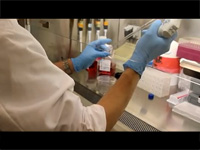
Jul 12 2012
Discovery of Chemical That Affects Biological Clock Offers New Way to Treat Diabetes
Biologists at UC San Diego have discovered a chemical that offers a completely new and promising direction for the development of drugs to treat metabolic disorders such as type 2 diabetes–a major public health concern in the United States due to the current obesity epidemic.
-
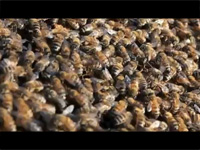
May 23 2012
Commonly Used Pesticide Turns Honey Bees into 'Picky Eaters'
Biologists at UC San Diego have discovered that a small dose of a commonly used crop pesticide turns honey bees into "picky eaters" and affects their ability to recruit their nestmates to otherwise good sources of food.
-
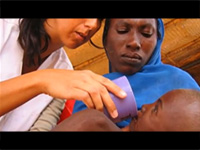
May 16 2012
UC San Diego Biologists Produce Potential Malarial Vaccine from Algae
Biologists at the University of California, San Diego have succeeded in engineering algae to produce potential candidates for a vaccine that would prevent transmission of the parasite that causes malaria, an achievement that could pave the way for the development of an inexpensive way to protect billions of people from one of the world's most prevalent and debilitating diseases.
-
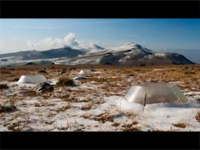
May 2 2012
Study Shows Experiments Underestimate Plant Responses to Climate Change
Experiments may dramatically underestimate how plants will respond to climate change in the future.
-
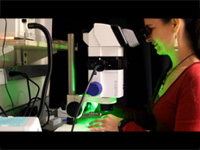
Apr 12 2012
Studies Reveal How Cells Distinguish Between Disease-Causing and Innocuous Invaders
The specific mechanisms by which humans and other animals are able to discriminate between disease-causing microbes and innocuous ones in order to rapidly respond to infections have long been a mystery to scientists. But a study conducted on roundworms by biologists at UC San Diego has uncovered some important clues to finally answering that question.
-
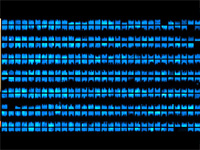
Dec 18 2011
Researchers Create Living 'Neon Signs' Composed of Millions of Glowing Bacteria
In an example of life imitating art, biologists and bioengineers at UC San Diego have created a living neon sign composed of millions of bacterial cells that periodically fluoresce in unison like blinking light bulbs.
-
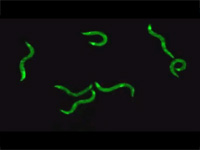
Nov 17 2011
Worms Reveal Secrets of Wound Healing Response
The lowly and simple roundworm may be the ideal laboratory model to learn more about the complex processes involved in repairing wounds and could eventually allow scientists to improve the body's response to healing skin wounds, a serious problem in diabetics and the elderly.
-

Nov 3 2011
Biologists Use Flies and Mice to Get to the Heart of Down Syndrome
A novel study involving fruit flies and mice has allowed biologists to identify two critical genes responsible for congenital heart defects in individuals with Down syndrome, a major cause of infant mortality and death in people born with this genetic disorder.
